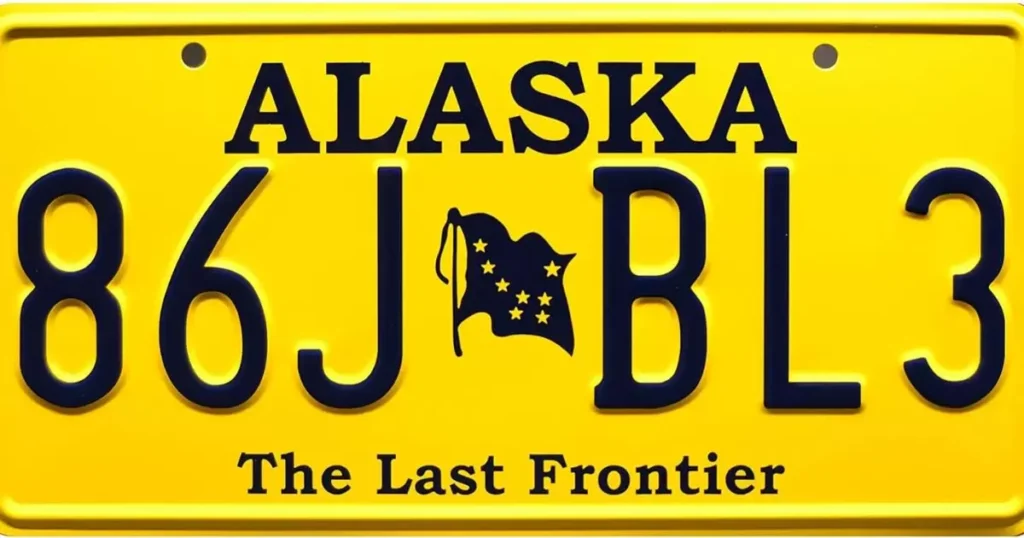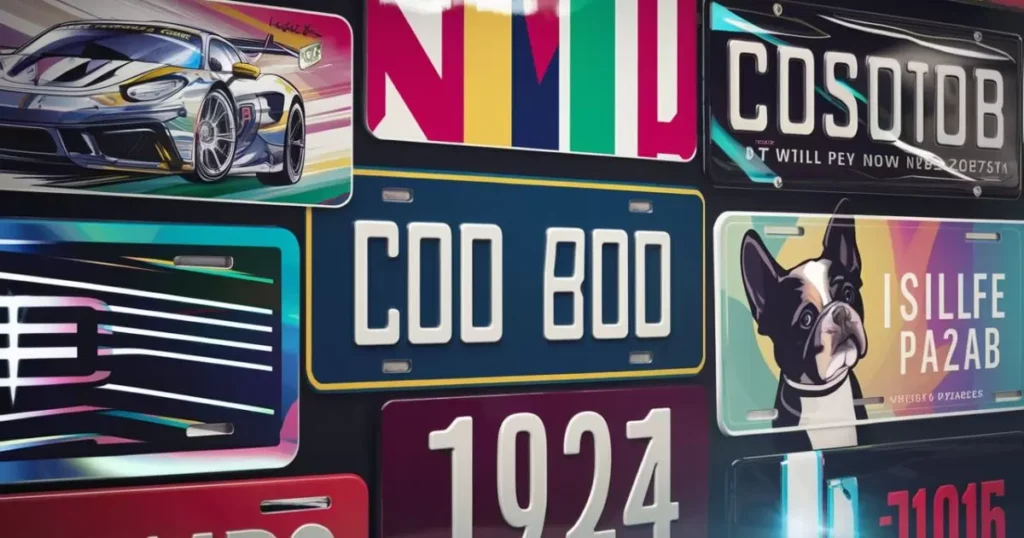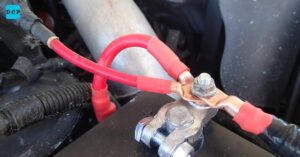Introduction
“3D number plates feature raised characters for a stylish, three-dimensional look, improving both visibility and durability.”
In the world of vehicle customization, number plates are often an overlooked but impactful detail. 3D number plates have emerged as a stylish and functional upgrade from traditional flat designs. These plates feature raised characters that create a distinctive three-dimensional effect, enhancing both their aesthetic appeal and visibility.
Unlike standard plates, which are typically flat and printed directly, 3D plates use a special resin or gel layer to give the text a raised appearance, making it stand out more prominently.
This innovation not only improves the look of the plate but also its durability and readability, offering vehicle owners a way to personalize their cars while ensuring compliance with legal standards.
As we delve deeper into the specifics of 3D number plates, we’ll explore their manufacturing process, customization options, and how they compare to other plate types, including the emerging 4D plates.
Difference Between 3D Plates and Standard Plates

3D number plates are a contemporary upgrade from traditional flat plates, incorporating a distinct visual and tactile element. Standard plates, typically made from acrylic or reflective materials, present a flat surface with the registration details applied via screen printing or embossing.
These plates are functional and adhere to the basic regulatory standards for vehicle identification but lack additional aesthetic or design features.
In contrast, 3D number plates feature raised characters and elements, giving them a three-dimensional effect. This is achieved through the application of a gel or resin layer that creates a raised effect on the numbers and letters.
The result is a more striking, high-contrast appearance that enhances the plate’s visibility and provides a premium look. The three-dimensional effect can make the characters more prominent and easier to read from a distance.
The difference also extends to the durability and maintenance of the plates. Standard plates can show wear and tear over time, leading to faded or chipped text. In contrast, 3D plates, due to their construction, are often more resistant to damage and fading, making them a durable choice for vehicle owners looking to maintain a high-quality appearance.
What Makes A Road Legal Number Plate?
How Are 3D Number Plates Made?
The production of 3D number plates involves a multi-step process designed to create the distinct raised effect. Initially, the plate’s base is crafted from high-quality acrylic or polycarbonate material, which provides a solid foundation. The registration details are then applied to the plate using digital printing technology or traditional screen printing to ensure accuracy and adherence to legal standards.
Once the base and details are prepared, a layer of resin or gel is applied to create the 3D effect. This layer is carefully poured or sprayed over the registration characters, which are then allowed to cure or dry. The curing process hardens the resin, making the characters stand out in relief against the plate’s background.
This not only enhances the plate’s appearance but also improves its resistance to environmental factors like UV rays and weather conditions.
Finally, the plate undergoes quality control checks to ensure that the 3D effect is consistent and that the plate meets all legal requirements for vehicle registration. Any imperfections are addressed before the plates are dispatched for use. This meticulous process ensures that 3D number plates are both aesthetically pleasing and functional.
3D Plates vs. 4D Plates: What’s the Difference?
While 3D and 4D number plates may sound similar, they differ in the techniques used to achieve their distinctive appearances. 3D plates feature raised characters created using a resin or gel layer, which provides a three-dimensional effect by lifting the registration details off the surface. This method adds depth and enhances the plate’s visual appeal, making it more noticeable.
4D plates, on the other hand, use a different approach to achieve their effect. They employ laser-cut acrylic letters and numbers that are attached to the plate’s base, creating a more pronounced and precise 4D effect.
The raised characters in 4D plates are typically sharper and more defined compared to those on 3D plates, giving them a more modern and high-tech appearance. The precision of laser cutting allows for intricate designs and finer details.
Another key difference is in the durability and maintenance of the plates. 4D plates are generally considered more robust due to their construction, with individual components that can withstand various environmental factors.
However, both 3D and 4D plates offer advantages in terms of durability compared to standard flat plates, though 4D plates might have an edge in terms of precision and high-definition appearance.
Can 3D Number Plates Be Used on Any Vehicle?
In general, 3D number plates can be used on most vehicles, provided that they meet the legal requirements set by the relevant authorities. The primary consideration is ensuring that the plates comply with regulations regarding size, font, and reflectivity, which can vary by region or country. It is crucial to check with local regulations to confirm that 3D plates are permissible for use on your vehicle.
Additionally, some vehicle types may have specific restrictions or requirements for number plates. For instance, certain commercial or vintage vehicles may be subject to different rules. Before purchasing or installing 3D number plates, it is advisable to verify that they meet all necessary specifications for your vehicle type.
Custom options for 3D plates, such as unique designs or custom text, should also adhere to legal standards. Any deviations from standard specifications might result in the plates being deemed non-compliant. Therefore, while 3D plates offer an aesthetic upgrade, ensuring compliance with legal requirements remains a critical step.
Customisation Options for 3D Number Plates
Customisation options for 3D number plates allow vehicle owners to personalize their plates according to their preferences. Common customisation choices include altering the text, incorporating unique designs, or selecting different background colors and effects. This level of personalisation can make a vehicle stand out and reflect the owner’s individual style.
Designing custom 3D plates often involves choosing from a range of fonts and styles for the characters. Some companies offer additional features such as custom logos or symbols that can be integrated into the plate design. This allows for a higher degree of personalization, ensuring that the plates are not only functional but also visually distinctive.
It’s important to note that customisation must still comply with legal standards. This includes ensuring that the plates meet size, font, and reflectivity requirements. Customisation providers usually offer guidance on how to design compliant plates while achieving the desired aesthetic. Adhering to these regulations ensures that the plates remain valid for road use.
Legal Requirements for 3D Number Plates
The legality of 3D number plates is governed by specific regulations that vary by jurisdiction. Generally, the plates must conform to standards regarding size, font, color, and reflectivity. For instance, the characters on the plates need to be of a certain size and font to ensure readability and uniformity.
In many regions, 3D number plates are subject to additional rules that dictate the material used and the method of construction. The raised effect achieved by the resin or gel layer must not interfere with the plate’s reflectivity or visibility, which are essential for identification purposes. Plates that fail to meet these standards may be deemed illegal.
Vehicle owners should consult local authorities or the relevant registration agencies to confirm that their 3D plates comply with all applicable regulations. Ensuring that customizations adhere to these legal requirements is crucial to avoid potential fines or issues with vehicle registration.
Durability and Maintenance of 3D Number Plates
3D number plates are designed to offer improved durability compared to traditional flat plates. The use of resin or gel layers not only enhances the plate’s appearance but also contributes to its resistance to environmental factors. This includes protection against UV rays, moisture, and physical impacts, which can cause fading or damage to standard plates.
Maintenance of 3D number plates is relatively straightforward. Regular cleaning with mild soap and water is usually sufficient to keep the plates looking their best. It’s important to avoid harsh chemicals or abrasive materials that could damage the resin or gel layer. Proper care helps maintain the plate’s appearance and ensures its longevity.
In terms of durability, 3D plates generally hold up well under various conditions. However, like any other component of a vehicle, they may eventually show signs of wear over time. Regular inspections can help identify any potential issues early, allowing for timely repairs or replacements to keep the plates in optimal condition.
Advantages of Choosing 3D Number Plates
Choosing 3D number plates offers several advantages, primarily related to their aesthetic appeal and visibility. The raised characters create a more striking and noticeable appearance compared to standard flat plates, which can enhance the vehicle’s overall look and make it stand out on the road. This can be particularly appealing for those who want a more personalized and distinctive vehicle.
Another advantage is the improved durability of 3D plates. The resin or gel layer used to create the 3D effect provides added protection against environmental factors that can cause wear and tear. This means that 3D plates are often more resistant to fading and damage, helping them maintain their appearance over time.
Additionally, the enhanced readability of 3D plates can improve safety. The raised characters are easier to spot from a distance, which can be beneficial in low-light conditions or from various angles. This increased visibility can contribute to better identification and reduce the risk of accidents or misunderstandings on the road.
Other Types of Custom Number Plates

In addition to 3D number plates, there are several other types of custom number plates that vehicle owners might consider. One popular option is 4D number plates, which use laser-cut acrylic letters and numbers to achieve a highly detailed and modern look. These plates provide a different aesthetic compared to 3D plates, with sharper and more defined characters.
Another option is reflective number plates, which are designed to enhance visibility at night or in low-light conditions. These plates use special reflective materials to ensure that the registration details are easily readable even in poor lighting. They are commonly used to improve safety and compliance with visibility regulations.
Personalized or show plates are also available, allowing for a wide range of custom designs, including unique backgrounds, borders, and fonts. These plates are often used for decorative purposes or as a form of expression, though they must still adhere to legal standards if used on public roads.
Building Unique Number Plates: Design Considerations
When designing unique number plates, several factors should be considered to ensure that the plates are both aesthetically pleasing and legally compliant. The first consideration is the design of the characters and text. Choosing a font and style that is both visually appealing and easy to read is crucial for functionality and compliance.
Another important factor is the material and construction of the plate. The choice of material can impact the plate’s durability, appearance, and adherence to legal standards. For custom designs, selecting high-quality materials that meet regulatory requirements while achieving the desired look is essential.
Finally, the overall design should align with legal requirements for size, reflectivity, and character spacing. Consulting witha professional plate manufacturer or legal expert can help ensure that the design meets all necessary regulations. This step helps avoid issues with registration and ensures that the unique plate remains roadworthy and compliant.
Answers to Key Questions
What is a 3D number plate?
A 3D number plate is a type of vehicle registration plate with raised, three-dimensional characters. Unlike traditional flat plates, 3D number plates feature embossed letters and numbers that create a more pronounced, textured effect. This style adds a modern and stylish look to vehicles.
How are 3D number plates made?
3D number plates are made using a process where the characters are embossed onto a base plate. This is typically done with high-quality acrylic or plastic materials. The raised characters are created by molding or pressing the material, often with a layer of reflective coating applied for better visibility.
Are 3D number plates legal?
The legality of 3D number plates can vary by country or region. In many places, as long as the number plates comply with specific regulations regarding size, font, and reflectivity, they are legal. It’s important to check local laws to ensure that 3D number plates meet all required standards.
What are the benefits of using 3D number plates?
The primary benefits of 3D number plates include enhanced visibility and a modern appearance. The raised characters can make the plate more noticeable, and the 3D effect adds a distinctive and stylish touch to the vehicle. Additionally, some people prefer them for aesthetic reasons or to personalize their vehicle.
Can 3D number plates be customized?
Yes, 3D number plates can often be customized in terms of design, font, and color. However, customization must still adhere to legal standards and regulations in your area. It’s important to work with a reputable provider who can ensure that any customizations comply with local requirements.
Conclusion
In conclusion, 3D number plates provide a modern and stylish alternative to traditional flat plates, offering distinct advantages in both appearance and functionality. The raised characters, achieved through the application of a resin or gel layer, not only enhance the visual appeal but also improve readability and durability.
These plates stand out due to their three-dimensional effect, which makes them more noticeable and attractive compared to standard options. However, it’s essential to ensure that 3D plates comply with local regulations regarding size, font, and reflectivity to avoid potential legal issues. Customisation options further allow vehicle owners to add a personal touch, making their plates unique while adhering to legal standards.
Exploring other types of custom plates, such as 4D or reflective options, can also provide additional benefits based on individual preferences and needs. Ultimately, 3D number plates represent a blend of aesthetic appeal and practical functionality, offering a significant upgrade for those looking to enhance their vehicle’s appearance and compliance.

Hi! I’m Liam Scott, the creator behind DriveCarsPedia.com. I’m passionate about cars and dedicated to providing you with expert reviews, detailed guides, and the latest automotive trends. Explore my site for reliable information and insights to fuel your love for cars!








